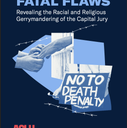
Ron Briggs, sponsor of the initiative which expanded California’s death penalty law in 1978, recently announced his support for repeal of the law. Writing in the Los Angeles Times, Ron Briggs explained that the 1978 Briggs Initiative was meant to “give prosecutors better tools for meting out just punishments, and that a broadened statute would serve as a warning to all California evildoers that the state would deliver swift and final justice” and “creat[e] a national model for capital punishment.” Thirty-four years later, he and other sponsors have all independently concluded that the system is not working. Briggs wrote, “Each of us remains a staunch Republican conservative, but our perspectives on the death penalty have changed. We’d thought we would bring California savings and safety in dealing with convicted murderers. Instead, we contributed to a nightmarish system that coddles murderers and enriches lawyers. Our initiative was intended to bring about greater justice for murder victims. Never did we envision a multibillion-dollar industry that packs murderers onto death row for decades of extremely expensive incarceration. We thought we would empty death row, not triple its population.” (emphasis added). Briggs concluded, “Had I known then what we do today, I would have pushed for strong life sentences without the possibility of parole. I still believe that society must be protected from the most heinous criminals, and that they don’t deserve to ever again be free. But I’d like to see them serve their terms with the general prison population, where they could be required to work and pay restitution into the victims’ compensation fund.” Ron Briggs is currently a member of the Board of Supervisors in El Dorado County, California. Read full op-ed below.
February 12, 2012
California’s death penalty law: It simply does not work
We believed the Briggs initiative — the death penalty measure we wrote in 1977 — would bring greater justice. We were wrong.
By Ron Briggs
In 1977, my dad, former state Sen. John Briggs, my brother-in-law and I got together to discuss California’s death penalty. We agreed it was ineffective and decided a ballot initiative was needed to expand the number of murder categories eligible for capital punishment. We felt such changes would give prosecutors better tools for meting out just punishments, and that a broadened statute would serve as a warning to all California evildoers that the state would deliver swift and final justice.
We thought we were creating a national model for capital punishment.
On a shoestring budget we collected more than 1 million signatures to put the proposition on the ballot. Half the signatures came via first-class business reply mail, which my wife, Kelly, and I manually processed. We didn’t have laptops or self-adhesive stamps then, although we did have a bomb scanner, which we’d been trained to use by the FBI after they discovered a terrorist plot to kill my dad.
On Nov. 7, 1978, California voters passed the Briggs initiative on the death penalty.
Back then, my future brother-in-law was Dad’s district chief of staff and I proudly served as my father’s personal aide. Today Dad is retired, my brother-in-law is a California Superior Court judge and I am in my second term as a county supervisor representing rural District IV in the county of El Dorado, east of Sacramento.
Recently, the three of us sat together under a rose trellis in the quiet cool of morning to talk politics. Each of us remains a staunch Republican conservative, but our perspectives on the death penalty have changed. We’d thought we would bring California savings and safety in dealing with convicted murderers. Instead, we contributed to a nightmarish system that coddles murderers and enriches lawyers. Our initiative was intended to bring about greater justice for murder victims. Never did we envision a multibillion-dollar industry that packs murderers onto death row for decades of extremely expensive incarceration. We thought we would empty death row, not triple its population.
Each of us, independently, has concluded that the death penalty isn’t working for California.
I am entering my fifth year as a county supervisor, an office that has given me firsthand experience of the fiscally ruinous effect of our death penalty initiative. Each capital case the district attorney files drains about $1 million from local coffers. And that’s just the expense to the county. Much more state and federal money is spent on special incarceration and on appeal after expensive appeal. If a retrial is ordered, our county has to foot the bill all over again.
The politically conservative county of El Dorado is in the Sierra Nevada foothills. Ours is a small and close community. Kelly and I have a dear friend whose husband was shot to death in their home, and we have another friend whose son was murdered. Every five years they are forced to attend parole hearings for the murderers of their loved ones. The anguish, anxiety and grief in their eyes are indescribable.
A couple of years ago I became acquainted with a woman who in 1981 survived being abducted, raped, thrown down a gully naked and shot multiple times. For good measure, her attacker threw rocks at her head. On that same day, the man murdered the woman’s friend. Because of the death penalty system we put in place, the survivor, a fragile mother of three, had to find courage to face her would-be killer again after he weaseled a technical appeal 26 years after the crime, forcing a full retrial here in El Dorado. It yielded the same verdict, and it took a huge human toll on his living victim.
If the murderer had been sentenced to life in prison without the possibility of parole rather than to death, the long cycle of appeals could have been avoided.
I cannot think of a single turning point in my thinking on the death penalty. My Catholicism teaches me that all life is precious, and that’s certainly part of my viewpoint these days. But what resonates more in my mind is Dad’s fondness for saying “facts are stubborn things.” With hindsight’s 20 – 20 vision and three decades of obstinate data, it’s clear to my family that we created a fiscal monster that’s taking a human toll on the very people we wanted to protect.
The ineffective legal beast created by California’s death penalty laws costs taxpayers more than $100 million annually and ties up the lives of prosecutors and victims who could be moving on to other things.
We thought our 1978 initiative created a system to support victims’ families. It didn’t. The only people benefiting today are the lawyers who handle expensive appeals and the criminals who are able to keep their cases alive interminably.
The Briggs death penalty law in California simply does not work.
Had I known then what we do today, I would have pushed for strong life sentences without the possibility of parole. I still believe that society must be protected from the most heinous criminals, and that they don’t deserve to ever again be free. But I’d like to see them serve their terms with the general prison population, where they could be required to work and pay restitution into the victims’ compensation fund.
There are few “do-overs” in life, especially in politics. With the death penalty, though, 34 years later I have an opportunity to set things right. The Briggs family has decided to endorse the SAFE California campaign, a fall 2012 ballot initiative that would replace the death penalty with a punishment of life without the possibility of parole. The state has another chance at real justice. We should embrace it.
Ron Briggs is a member of the Board of Supervisors in El Dorado County.
(R. Briggs, “California’s death penalty law: It simply does not work,” Los Angeles Times, February 12, 2012). See New Voices and Recent Legislation. For more information on the SAFE California campaign, click here.


